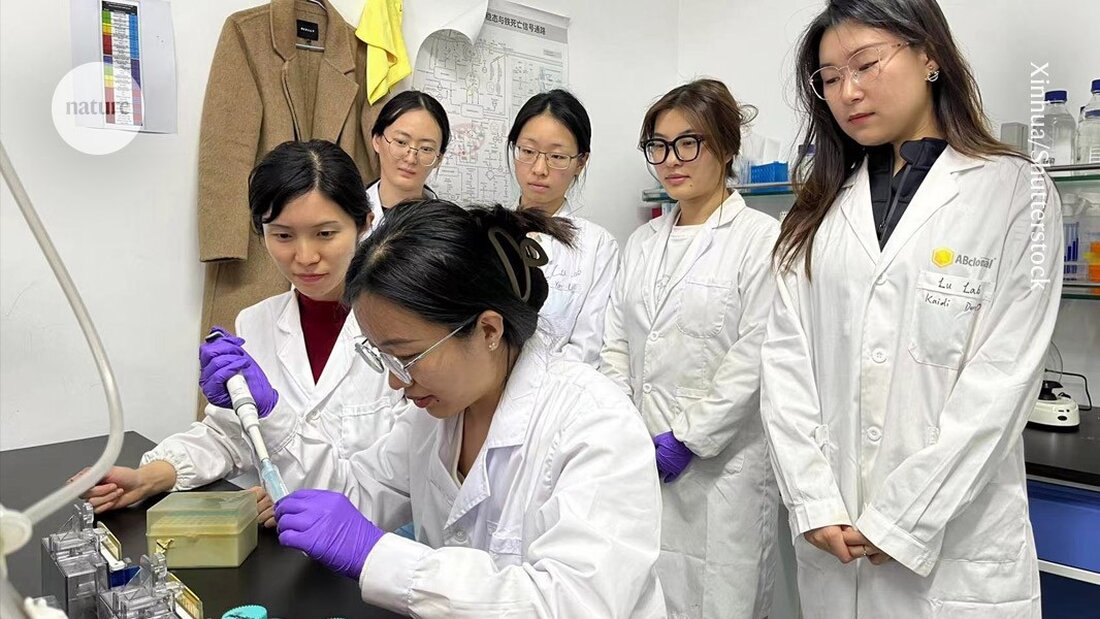Chinese scientists report that funding restructuring is making it harder to win research grants
Chinese scientists report that NSFC reforms are making it harder for young researchers to access research grants.

Chinese scientists report that funding restructuring is making it harder to win research grants
Scientists in many countries face immense competitive pressure for research funding, but the situation in China is particularly intense, particularly for scientists early in their careers. To address this problem, one of the country's largest funders of basic research, the National Natural Science Foundation of China (NSFC), launched last year Reforms introduced which aim to better support young scientists. However, some fear that this will make the situation worse.
Based in Beijing, the NSFC oversees several programs that provide funding through competitive scholarships. This year saw a massive increase in applications, totaling more than 380,000, a 26% increase compared to last year. Only 13% of these applications were successful, compared to 16% in 2023.
The success rate of the NSFC Young Scientists Fund, which supports male researchers under 35 and female researchers under 40, has also fallen, from 17% in 2023 to 15.5% this year, analysis on WeChat shows. The number of applications to the fund increased by 11.3% over the same period, an NSFC report shows.
“The competition is extremely intense,” says Cong Cao, a science policy researcher at the University of Nottingham Ningbo China. For comparison: The funding rate from the National Science Foundation of the USA was 29% in 2023.
New guidelines
Researchers attribute the rise in NSFC applications this year to the foundation's decision to remove the requirement that applicants who have been unsuccessful in two consecutive years wait a year before applying again.
Another recent change is the expansion of the Outstanding Young Scientists Program (DYS), which offers outstanding young scientists the opportunity to pursue their own research over a five-year period. Starting this year, up to 20% of these scientists will be eligible for a further five years of funding.
“This is a positive development,” said Albert Hu, an economist who focuses on science and technology at the China Europe International Business School in Shanghai. This suggests that policymakers in China are becoming increasingly aware that basic research projects need long-term support, Hu says.
But others worry that providing additional funding to a small group of already well-supported DYS researchers will make it difficult for other early-career scientists to receive limited funding. Typically, DYS researchers already have access to a variety of funding sources from universities, local governments and the corporate sector, says Yanbo Wang, a science policy researcher at the University of Hong Kong. He is also not convinced that the additional funding will lead to better research results. “There is little evidence that these few individuals can use the additional funding more effectively than those who did not receive funding,” says Wang.
The NSFC rejected Nature's query about the impact of the policy changes. In August he declared Head of the agency, Dou Xiankang, told Nature that the reforms are aimed at further supporting young scientists. As part of these reforms, the NSFC also introduced funding for undergraduate and graduate students to help them embark on their research careers.
Old problem getting worse
The struggle for funding is not unique to researchers in China, says Li Tang, a science policy researcher at Fudan University in Shanghai. “Many countries face similar challenges in balancing the demand for excellence in research with an equitable distribution of resources,” says Tang.
But China's broader research evaluation system—which places particular emphasis on securing NSFC grants—increases competition for limited funds, Tang says.
NSFC grants are a measure of success when researchers are evaluated for contracts, promotions and tenure, says a researcher who wished to remain anonymous because he fears his opinion could affect his chances of winning future NSFC grants. Many early-career scientists view NSFC funding as a key to career opportunities, not just a means to fund their projects, the researcher says. “We see the NSFC as a bridge.”
Growing research community
The increasing number of early-career scientists will further increase pressure on funding. In 2023, around 1.3 million graduates were enrolled in universities across China, an increase of 4.8% from the previous year, according to the Ministry of Education.
Another factor that increases the pressure to obtain funding is that many universities do not offer start-up packages for young scientists, forcing them to apply for funding from external sources to start their careers, Cao adds. “If you don’t have money from outside sources, it’s very difficult to start your career,” he says.
One way to reduce competition and pressure on young Chinese scientists is to create a more diverse range of funding sources, Hu says. Universities and research institutions should also base their research evaluations on the results of funded projects, rather than just the number of grants won, he adds. “There needs to be a change in the way these young scientists are evaluated,” Hu says.

 Suche
Suche
 Mein Konto
Mein Konto
